Books in a museum context have the particular challenge of being objects of study as well as objects of display. The beautifully decorated leather bindings which make the Founder’s Library such a grand historic interior also hold contents of great interest and therefore serve several purposes, both decorative and functional.
To commemorate the 400 years since the death of William Shakespeare, a small exhibition was put together last year at the Fitzwilliam Museum: ‘All the world’s a stage’: Shakespeare in Publication and Performance. Two of the books chosen1 to be displayed had loose or detached boards as well as worn corners and endcaps which would have affected their display. After consultation between the curator and the conservators, we decided to undertake conservation treatment firstly for the books to be displayed safely and look cared for but also, in a much bigger scale, to restore their flexibility and allow them to be consultated safely by readers.
Both books are second impressions of William Shakespeare’s work, printed in 1632. They are now in an early 19th century binding. The beautifully decorated bindings were covering a poorly made structure as some 19th century practices are known to put more importance into the aesthetic of the book rather than its mechanical function. The ’Russia calf’ leather used for the covering of the binding had become brittle over time due to its acidic nature. Joints are usually the first area to break down as they are subject to a lot of stress.
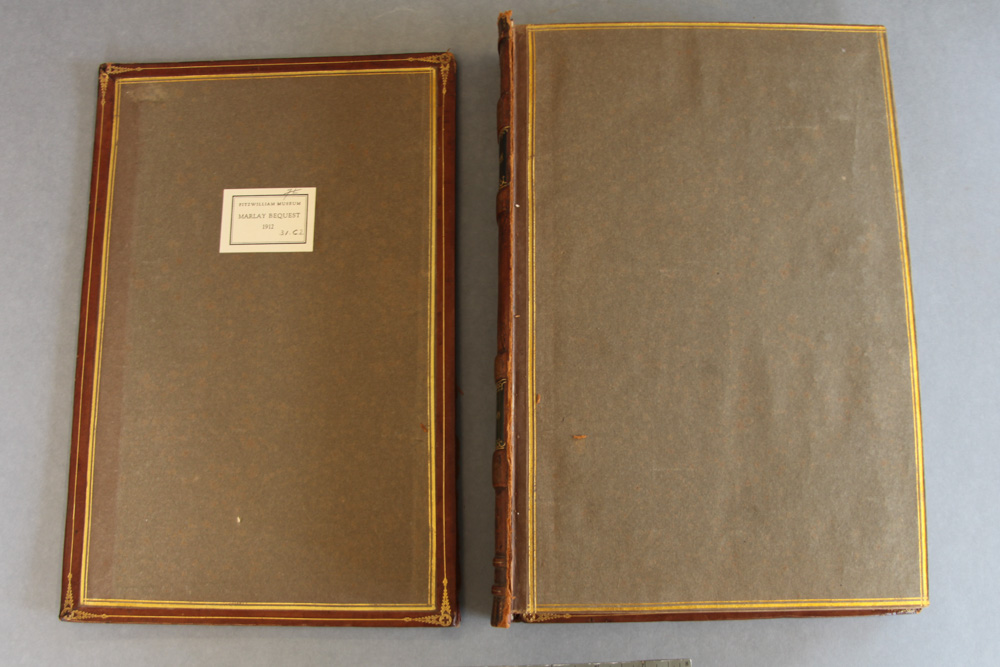
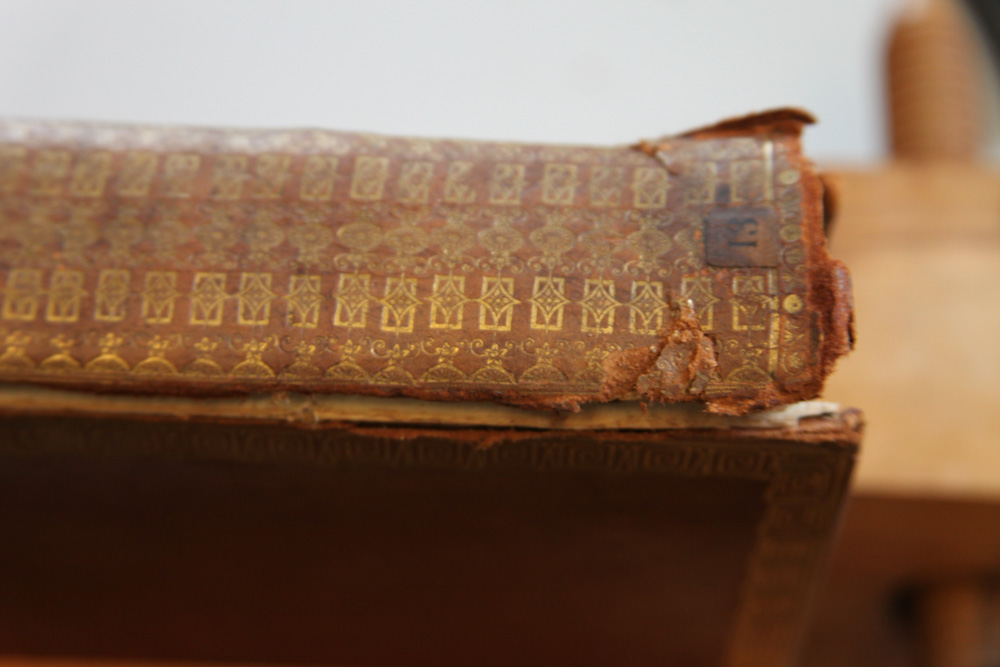
We had two weeks prior to the exhibition to restore and even improve the accessibility of the content of the books by re-attaching the loose boards in a flexible and durable way. Re-attaching boards can be done in many ways and these books provide a good example of two different techniques we use.
The possibility to lift the gilded spine or not usually determines which technique we will use. If the spine is fairly easy to lift without falling into pieces, we will go for a re-back2, otherwise, we will reduce the lifting to a minimum and insert small strips of cloth underneath patches of leather. For the first book, the spine could be lifted so we decided to do a re-back.
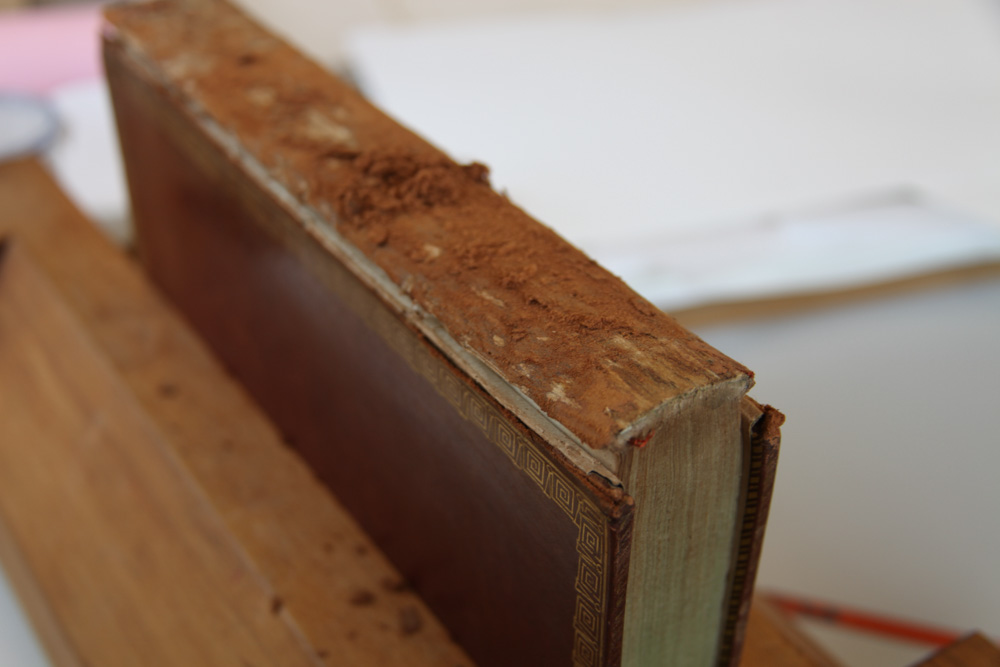
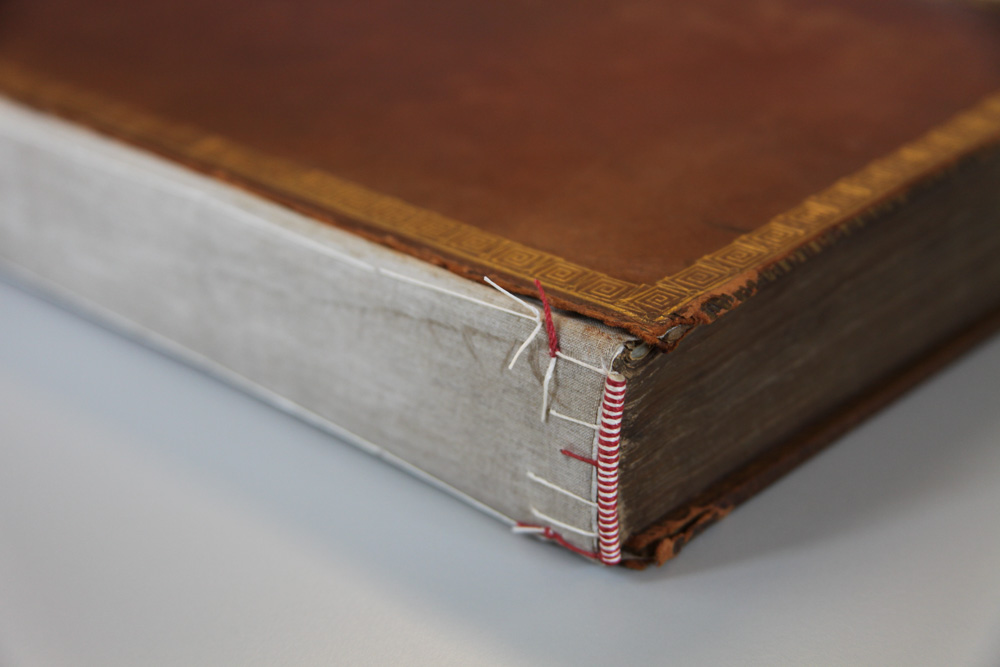
After lifting the leather spine from the book and cleaning the spine from residues of old brittle glue, a wide strip of aerolinen3 was adhered to the spine. The aerolinen was then stuck with paste and EVA4 in the previously split boards in order to re-attach them to the text-block.
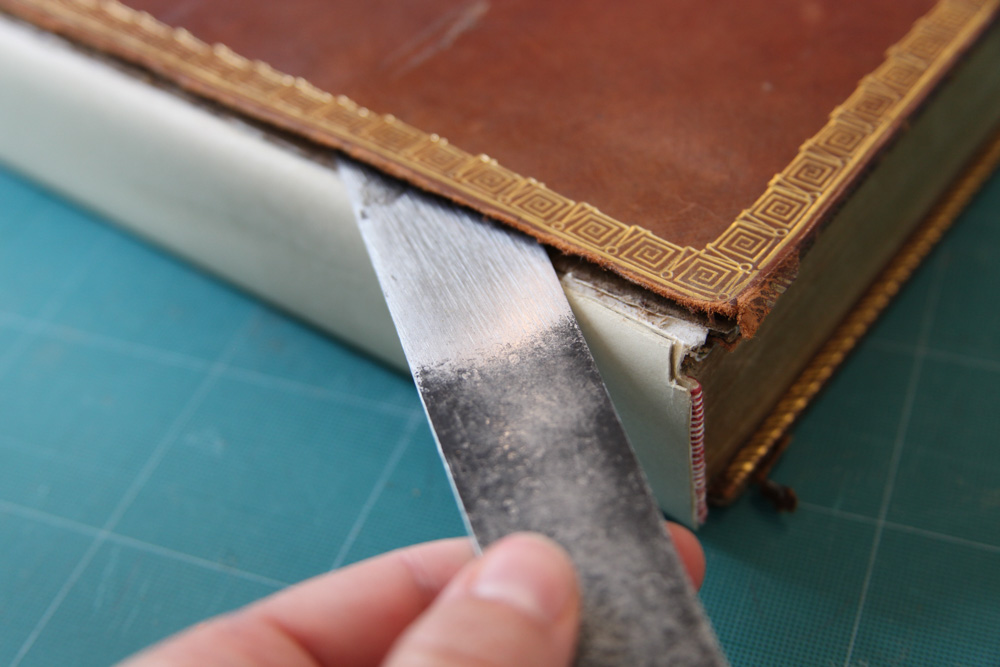
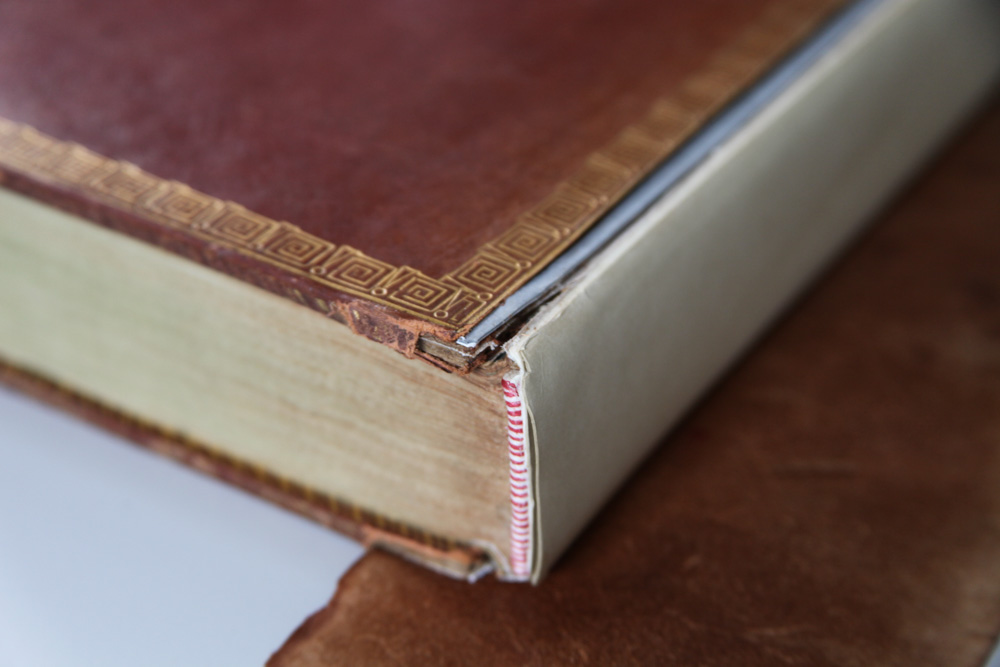
The leather on the boards was lifted away along the spine edge and trimmed along the gold- tooled line. A hollow back5 made of Heritage Archival pHotokraft paper was adhered onto the spine and the book was re-backed with new toned leather.
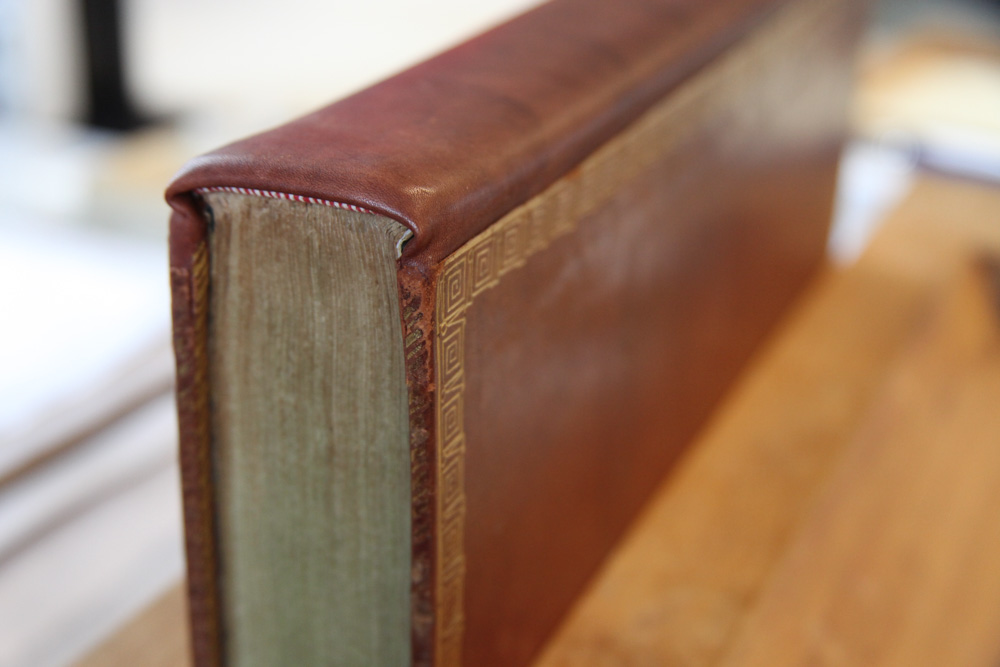
The original spine was then re-adhered onto the book and the missing areas on the spine leather were filled with Japanese paper and toned with acrylic paint to match the leather on the spine.
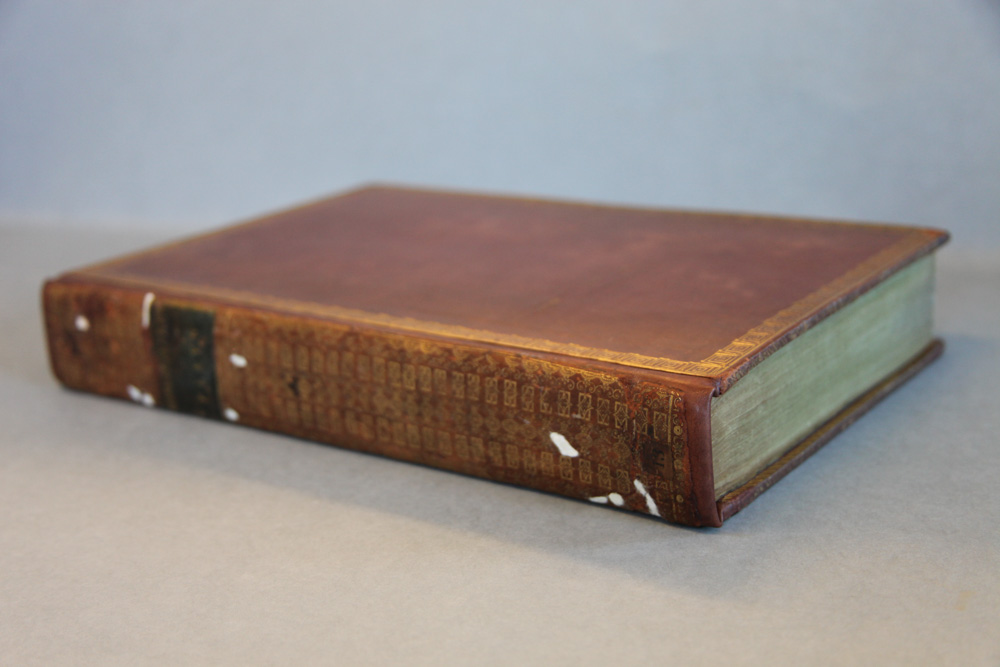
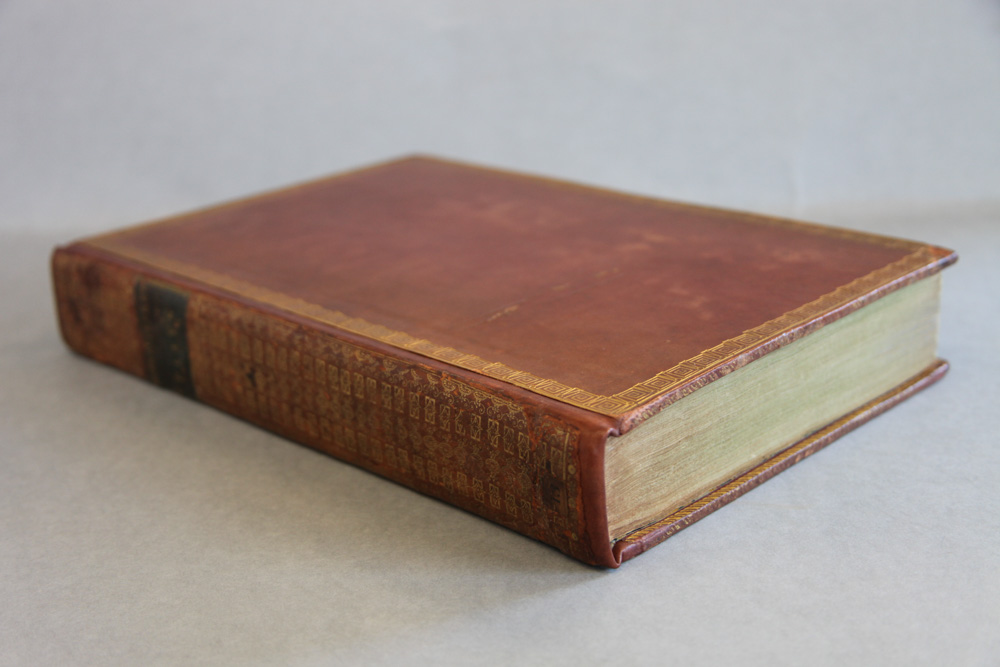
This treatment should be very long-lasting as the joints are now supported with aerolinen and new leather. Endcaps have also been restored in the process of re-backing and the original spine is now well supported.
The second book was quite another story. The leather was too brittle for the whole spine to be lifted away without losing the decoration and the sewing was in good condition which means that the spine didn’t need to be treated. Therefore, the leather was only lifted along the edges of the panels to allow tabs of aerolinen to be adhered to the spine and onto the boards to form a strong but flexible attachment.
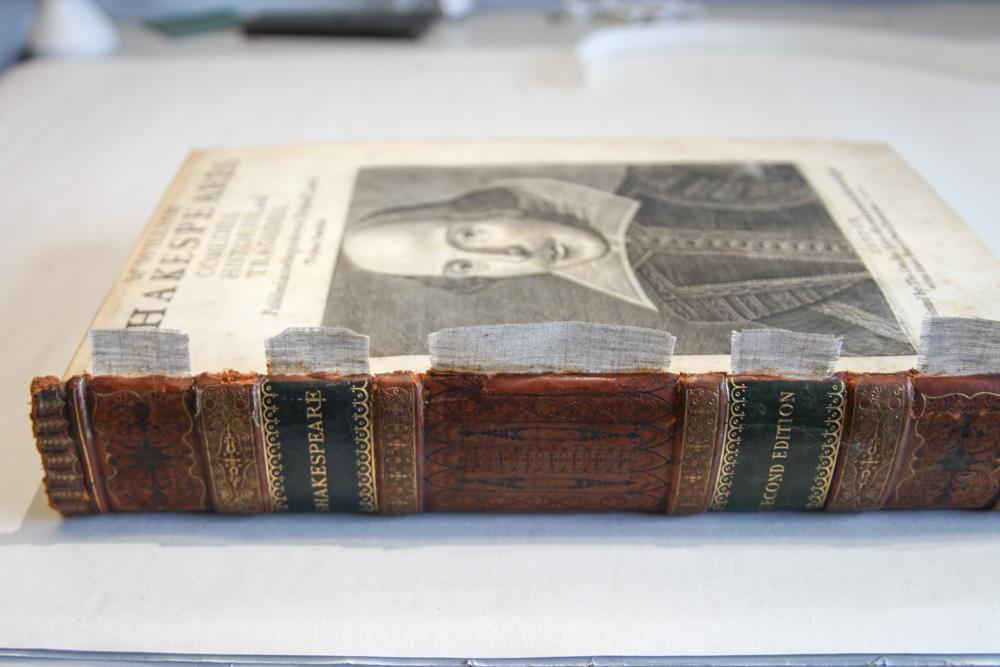
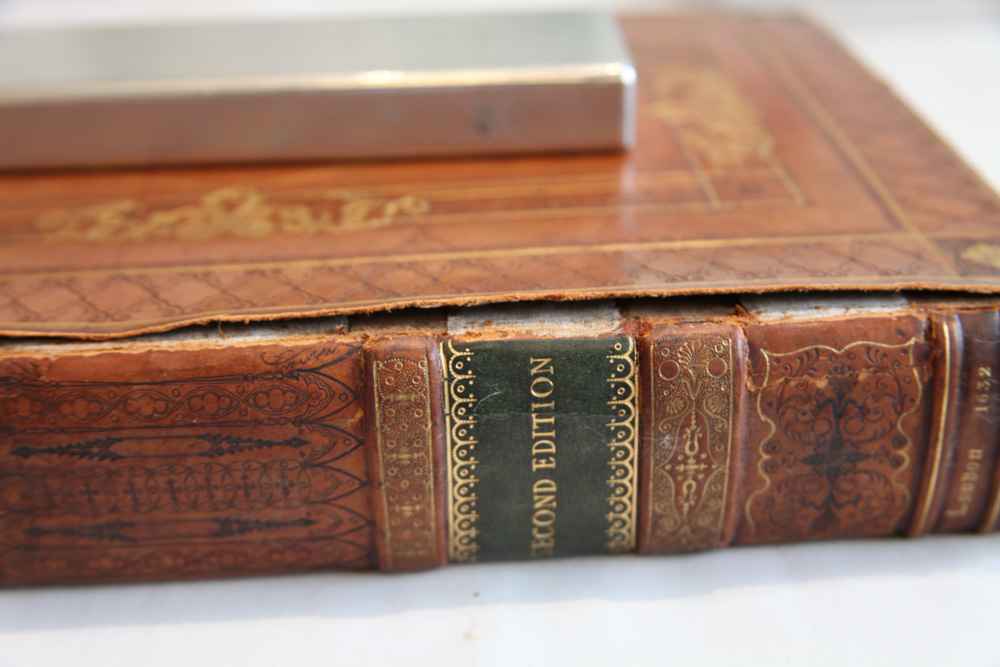
When these repairs were dry the original leather was readhered with a mixture of EVA and wheat-starch paste. The joints were then covered by a thin strip of Japanese paper6 to prevent slight cracks from developing. Paper repair patches were toned in situ using Golden’s acrylic paints and the whole binding was furbished with two light coats of Renaissance microcrystalline wax
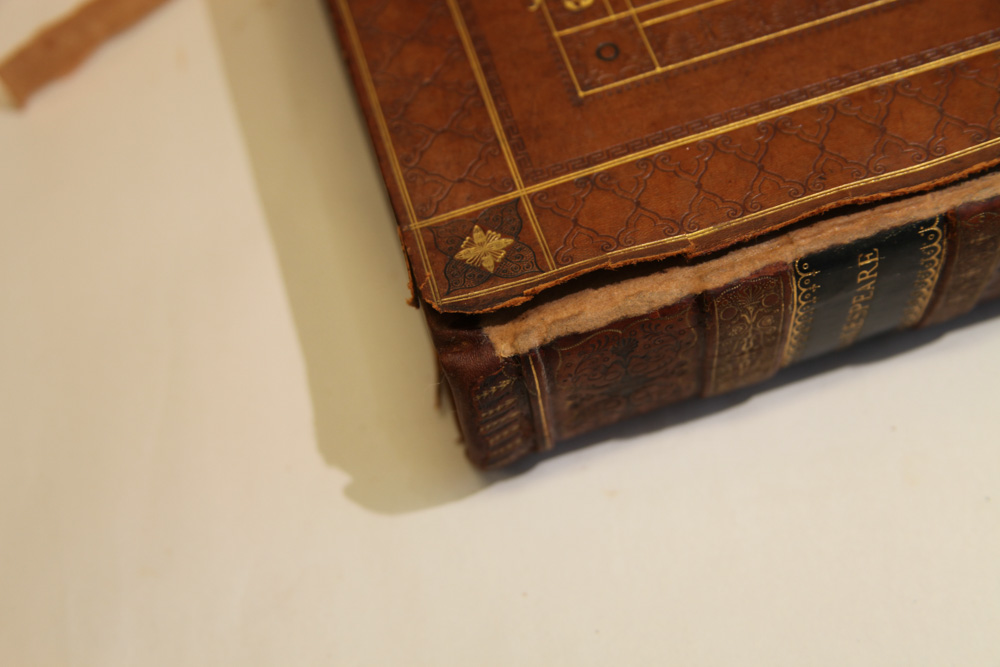

This treatment is very efficient as it is much less time-consuming than a re-back but strong enough to hold the boards to the book when the rest of the binding is in good condition.
Both books have kept their aesthetical value which is extremely important in the context of historic libraries. They will still be able to fulfil their decorative role as well as being accessible and available for researchers and readers.

